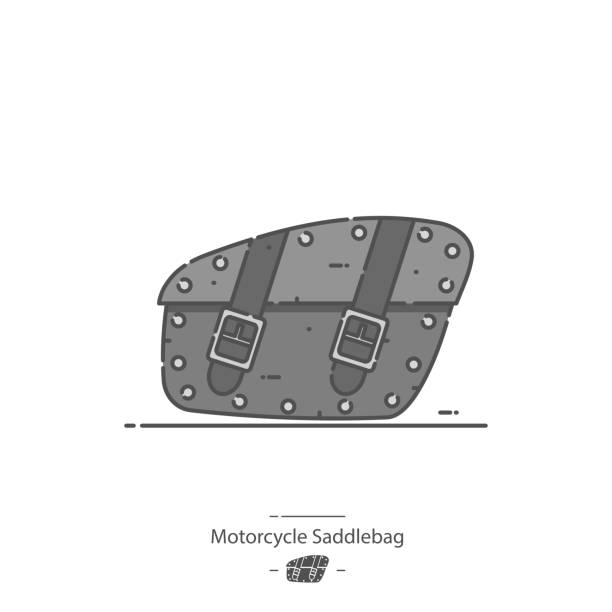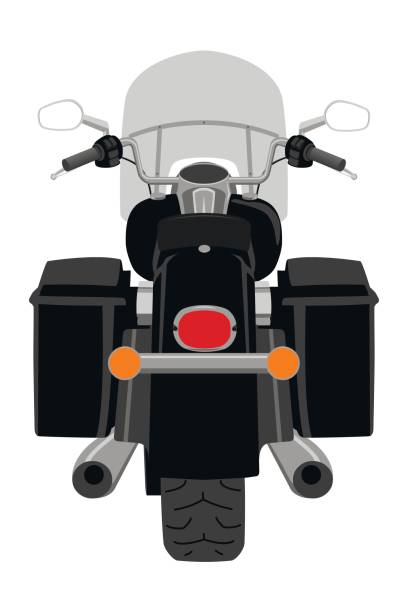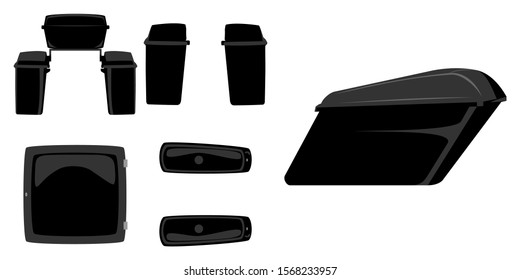In This Article
Are you tired of struggling to find a secure and convenient way to carry your essentials while riding? A motorcycle seat bag offers a comfortable solution for riders seeking to enhance their storage without compromising on style or performance. Many motorcyclists face the dilemma of limited space, especially during long trips or daily commutes. In this article, we’ll explore everything you need to know about motorcycle seat bags, from size and material options to installation tips and top product recommendations. Whether you’re a seasoned rider or a newcomer, you’ll find comprehensive answers to all your questions, ensuring you choose the perfect seat bag for your adventures.
* **Problem Solving:** Users are asking specific questions like ‘- What is the best motorcycle seat bag for long trips?’ and ‘- How do I install a motorcycle seat bag?’. This shows they have specific problems they need to solve regarding ‘motorcycle seat bag’.
This article is designed to meet all these needs by providing comprehensive explanations, practical guides, and comparative information.
Motorcycle seat bags are designed to provide convenient storage for riders, allowing easy access to essential items during trips.
These bags come in various sizes and styles, including soft-sided and hard-shell options, catering to different storage needs and preferences.
Many motorcycle seat bags feature weather-resistant materials to protect belongings from rain and dirt, enhancing durability and usability.
Installation typically involves simple straps or quick-release mechanisms, ensuring they can be securely attached and removed without hassle.
Motorcycling can be an exhilarating experience, but carrying your essentials can be a challenge. Fortunately, a motorcycle seat bag provides a convenient solution for riders looking for easy storage without compromising comfort or safety. Whether you’re planning a long-distance journey or just a weekend ride, the right motorcycle seat bag can make all the difference.
A motorcycle seat bag is a storage solution designed to attach securely to the seat of a motorcycle. It provides riders with a way to carry items such as clothing, tools, food, and other essentials while on the road. The bags come in various sizes, styles, and materials, making them versatile options for different types of motorcycles and riding styles.
Motorcycle seat bags are specifically engineered to meet the unique demands of riding. These bags can be categorized based on their attachment style, size, and intended use.
Motorcycle seat bags are constructed from a variety of materials, including:
– Nylon: Lightweight and durable, resistant to wear and tear.
– Leather: Offers a classic aesthetic but may require more maintenance.
– Waterproof Fabrics: Often used in bags designed for all-weather riding.

Weather Resistance: Essential for keeping your belongings dry during unexpected rain.
Reflective Strips: Enhances visibility for safer riding at night.
Quick Release Straps: Allows for easy removal and attachment.
Expandable Compartments: Provides versatility for carrying larger items.
When choosing a motorcycle seat bag, several core factors and components should be evaluated:
What size motorcycle seat bag do I need?: The right size depends on what you intend to carry. If you’re planning long trips, consider a larger capacity bag.
How do I install a motorcycle seat bag?: Most bags come with straps, buckles, or Velcro that attach to the seat or frame. Make sure to follow the manufacturer’s instructions for secure attachment.

Will the motorcycle seat bag affect my riding comfort?: A well-designed seat bag should not interfere with your riding position. Opt for low-profile designs that maintain aerodynamics.
Are motorcycle seat bags secure?: Look for bags with locking mechanisms or the capability to be secured with a lock to prevent theft.
Like any accessory, motorcycle seat bags come with their own set of advantages and disadvantages.
Motorcycle seat bags serve various purposes, and understanding their applications can help you choose the right one.
For long trips, a larger tail bag can hold clothes, tools, and snacks. Many riders prefer expandable bags that can accommodate extra gear as needed.
For daily riders, a compact saddle bag may be sufficient for carrying a laptop, lunch, or a change of clothes. These bags fit snugly and don’t disrupt the bike’s lines.
When heading out for a weekend camping trip, a waterproof seat bag can keep your gear dry while providing ample storage for essentials like sleeping bags and food supplies.
In conclusion, motorcycle seat bags are an essential accessory for riders looking to combine convenience with functionality. They are available in various styles and sizes, catering to different riding needs and preferences. When selecting a motorcycle seat bag, consider factors such as size, attachment methods, comfort, and security features to ensure you find the perfect fit for your adventures on the road.

For long trips, a high-capacity tail bag with waterproof features is often recommended. Look for bags with comfortable straps and additional pockets for organization.
To install a motorcycle seat bag, follow these general steps:
1. Secure the bag to the seat using the provided straps or buckles.
2. Ensure the bag is tightly fastened to avoid movement while riding.
3. Adjust the straps as necessary to achieve a snug fit.
Many motorcycle seat bags offer waterproof or water-resistant options. However, it’s essential to check the specifications before purchasing to ensure your belongings remain dry in inclement weather.
The size of the motorcycle seat bag you need depends on your intended use. For daily commuting, a smaller bag may suffice, while longer trips may require a larger bag with more capacity.
This comprehensive guide is designed to equip you with everything you need to know about motorcycle seat bags, ensuring you can make an informed choice tailored to your riding needs. Whether for daily commutes or cross-country adventures, the right seat bag will enhance your riding experience.
When it comes to motorcycle seat bags, users often encounter several challenges that can affect their riding experience. Below are three common pain points, complete with relatable scenarios and practical solutions to help alleviate these issues.
User Scenario:
Imagine Sarah, an avid motorcyclist who loves weekend road trips. One Saturday, she plans a day trip to the mountains with friends but finds her motorcycle seat bag barely holds her essentials—just a water bottle and a snack. She has to leave behind her rain gear and extra layers, which makes her anxious about unpredictable weather.
Solution:
To combat limited storage capacity, consider investing in a larger motorcycle seat bag with expandable features. Look for bags that offer modular compartments or external attachment points for additional items. Brands like Nelson-Rigg and Kriega offer versatile options with adjustable straps and multiple pockets. Additionally, opt for a bag made from durable, water-resistant materials to protect your belongings while maximizing space. Always pack efficiently by using compression bags for clothing and organizing smaller items in pouches.
User Scenario:
Tom frequently commutes to work on his motorcycle, but he notices that his seat bag shifts and bounces during rides. This not only distracts him but also raises concerns about potential damage to his motorcycle and belongings. He fears a sudden jolt might cause the bag to fall off completely.
Solution:
To stabilize your motorcycle seat bag, ensure it is securely fastened using all available straps and buckles. Look for a seat bag that comes with anti-slip materials or a non-slip base that grips the seat. Additionally, consider using a cargo net or bungee cords to further secure the bag. Regularly check the bag’s attachment points before each ride to ensure everything is tightly fastened. A well-fitted bag helps maintain balance and keeps you focused on the road.
User Scenario:
Liam enjoys long rides but often finds himself frustrated when he needs to access his tools or snacks stored in his motorcycle seat bag. Stopping to dig through the bag takes time and disrupts the flow of his journey, causing him to miss beautiful views or quality time with friends.
Solution:
For easier access to your items, choose a motorcycle seat bag with quick-release buckles or zippers that allow for one-handed operation. Consider bags with side openings or top flaps that provide easy reach without having to remove the bag from the seat. Organize your belongings by frequently used items on top or in external pockets. Using clear pouches for smaller tools can also make it easier to locate what you need quickly. Planning your storage layout based on your ride’s needs will enhance your overall experience and reduce the hassle of accessing items.
By addressing these pain points with understanding and practical solutions, motorcycle enthusiasts can enhance their riding experience and enjoy their journeys without unnecessary stress.
The term “motorcycle seat bag” refers to a type of accessory designed for motorcycles, typically used for storing personal items securely while riding. These bags can vary in size, capacity, and features, making them suitable for different types of riders and riding styles. Below is a comparison table highlighting some of the main competitors in the motorcycle seat bag market, focusing on their features and benefits.
| Feature | Motorcycle Seat Bag A | Motorcycle Seat Bag B | Motorcycle Seat Bag C |
|---|---|---|---|
| Capacity | 15 liters | 20 liters | 10 liters |
| Material | Waterproof nylon | Heavy-duty polyester | Leather |
| Attachment Method | Straps | Quick-release buckles | Velcro |
| Price | $49.99 | $69.99 | $39.99 |
| Additional Features | Reflective strips | Expandable design | Built-in rain cover |
This table provides insights into the different options available for motorcycle seat bags, helping riders choose the one that best fits their needs and preferences.
— Industry Expert Analysis